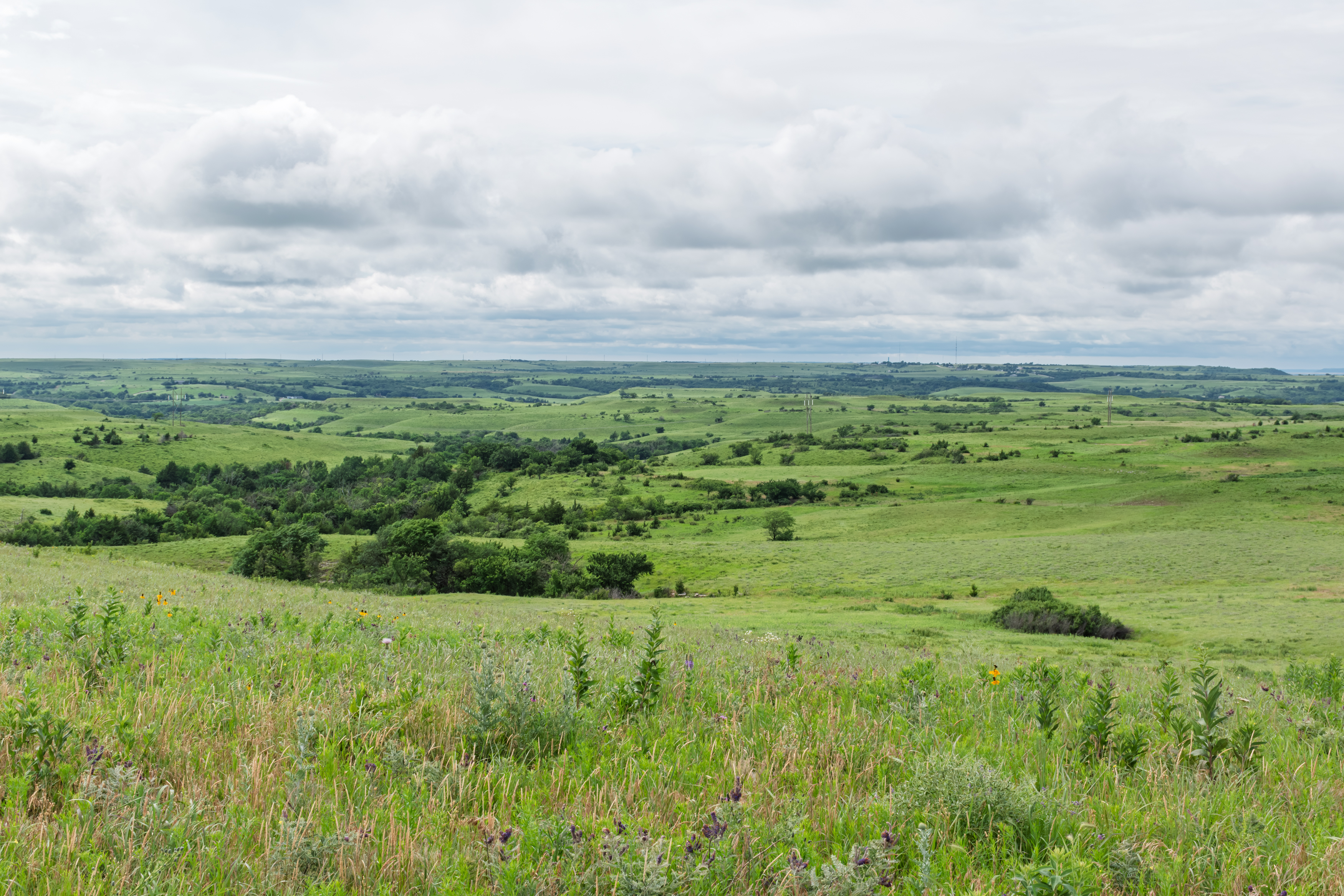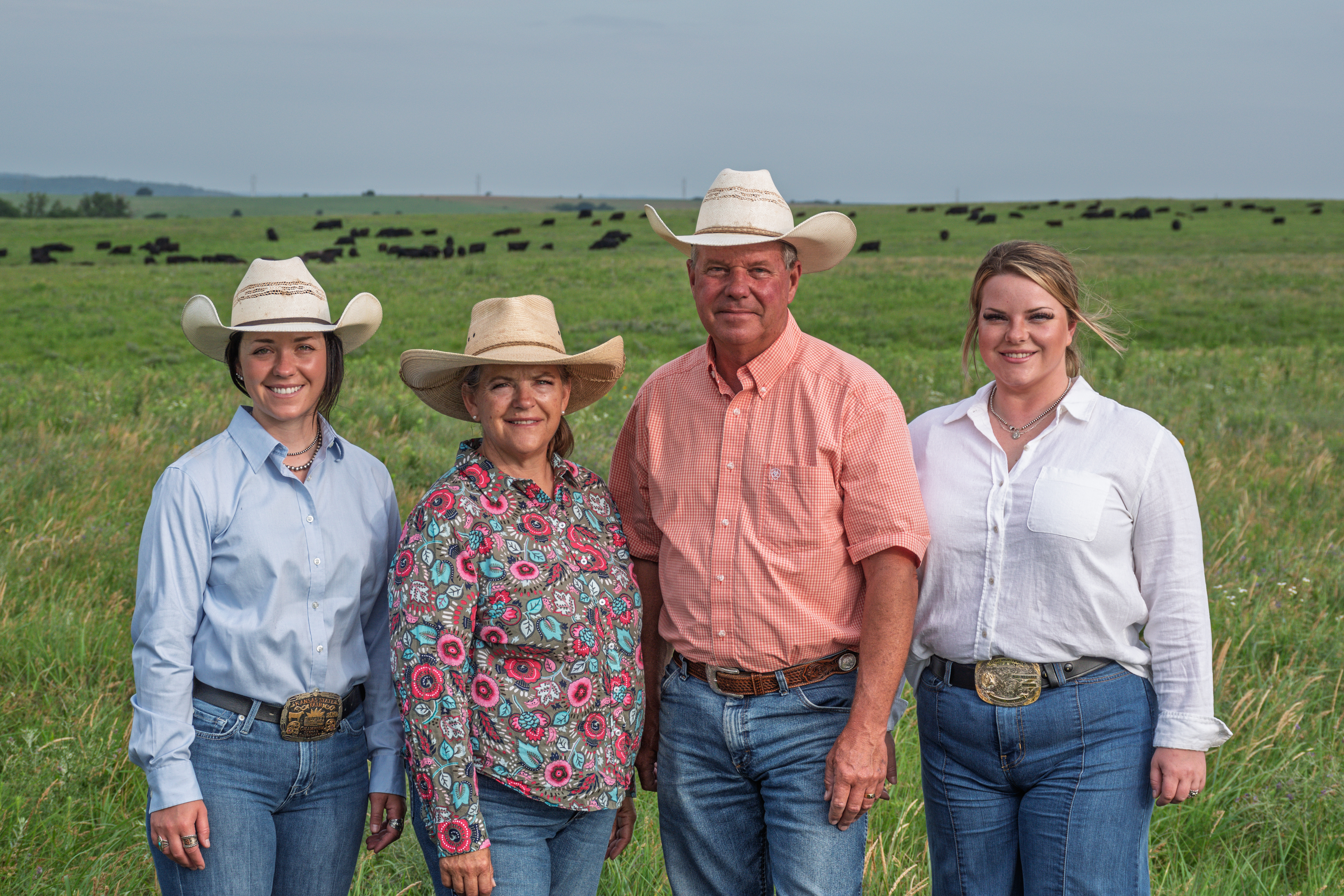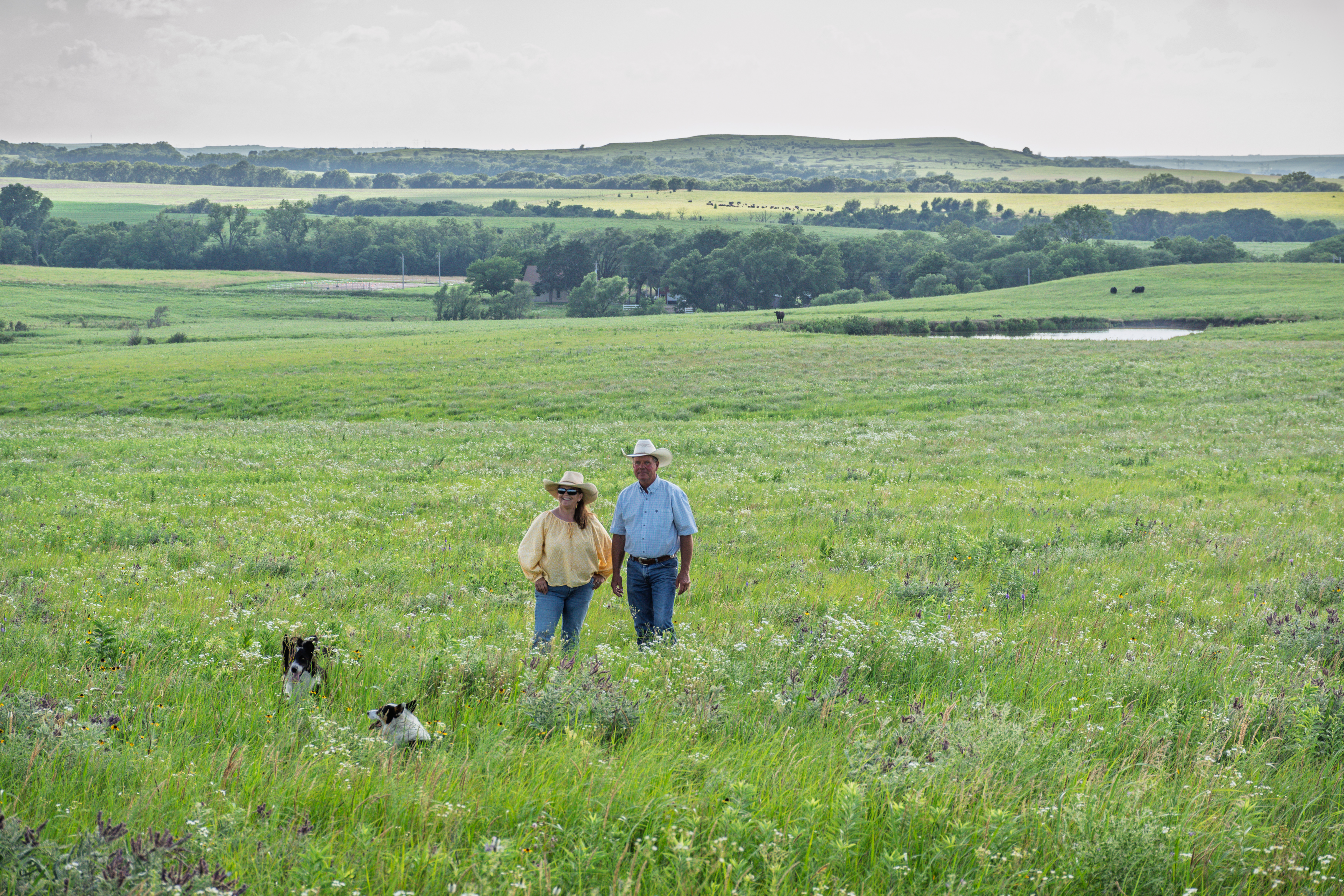Country Selector
Please enter a valid location
Getting back to the basics on Downey Ranch, Inc

Managing woody encroachment is one of the biggest challenges Barb Downey and her husband, Joe Carpenter, face in their continued effort to keep the 6,000 acres of native tallgrass prairie that make up Downey Ranch, Inc., (DRI) as natural as possible.
DRI, the 2024 national Environmental Stewardship Award winner, was founded by third-generation cattle producer Joe Downey in Kansas’ Flint Hills in 1986. Today, DRI is owned and operated by his daughter, Barb; her husband; and their daughters, Anna and Laura. Located southwest of Wamego, Kansas, DRI is a 550-head registered and commercial cow-calf operation that produces Angus and SimAngus seedstock bulls and females and feeder calves.

Downey Ranch, Inc., is a 550-head registered and commercial cow-calf operation that produces Angus and SimAngus seedstock bulls and females and feeder calves on 6,000 acres of native tallgrass prairie in the Flint Hills southwest of Wamego, Kansas.
“We have to make sure that we are getting proper use of the land and being the most efficient that we can be,” Carpenter says. “That means getting rid of the trees that don’t belong here and getting the prairie back to the way it belongs.”

Downey Ranch, Inc., is owned and operated by Barb Downey, and her husband, Joe Carpenter, (center) along with their daughters, Laura (left) and Anna (right). DRI is located southwest of Wamego, Kansas.
Spot-spraying helps maintain prairie
By using a measured approach of spot-spraying stumps and doing prescribed burns, the couple can manage woody encroachment of cedar trees while enhancing the mix of grass species in the pastures with the likes of leadplant, purple prairie clover, wild alfalfa and white prairie clover.
“Tordon (22K) and Remedy are my go-tos when I’m doing spot spraying,” he adds. “We try not to spray entire pastures because of the native tallgrass prairie forbs that are part of the complete prairie system. We prefer a more measured approach.”
Musk thistles and sericea lespedeza, or Chinese bush clover, are the noxious weeds that infest the pastures and are the main targets for spot-spraying. Although deer like sericea, cattle will not eat it, as it has higher tannin concentration and upsets their stomachs.
Bale grazing saves on labor, input costs
In addition to having cattle graze the pastureland, the couple have incorporated bale grazing into the operation for winter feeding. The approach saves time and labor while also improving brome grass and farm fields.
“The idea is to never pick up the bales and move them — (the bales) are fed right where they come out of the baler,” Downey explains. “We’re not moving the bales off the field. We’re moving the cows to the bales. We estimate with just labor and machinery savings, that we save a dollar per head per day. With this system, we’ve seen our soil organic matter increase and we’re saving thousands of dollars in fertilizer.”
Trial and error also were part of the bale grazing process. Initially, plastic netting was used on the bales, but that led to netting being found in paddocks over time. Now, using sisal twine, a more natural binder, bale grazing works well for the ranch.
“Our most productive grass is on an old bale site,” she adds. “We are seeing clovers and trefoil thrive on these sites.”
Plan your work, work your plan
Having a plan in place to eradicate invasive species and head off woody encroachment is another piece of the puzzle that makes up the work plan at DRI. Enrolled in the Environmental Quality Incentives Program (EQIP) and the Great Plains Grassland Initiative (GPGI), both through USDA’s Natural Resources Conservation Service (NRCS), the couple utilize the plans that are developed through the programs to improve efficiencies.
“The NRCS programs give us a road map on what we are going to do,” Downey explains. “This helps us develop a plan of attack, so we can be most effective with our time and our resources.”
Now in Year 3 of the five-year plan, the ranch has made some changes and adaptations along the way. Luckily, the NRCS has updated policies to allow flexibility and adaptations depending on the operation.
“We do a lot of adapting,” she continues. “It has been important to be flexible. Operations that are only 40 miles apart are completely different, so the adaptability and flexibility has been key.”
Trying new things
Downey and Carpenter are the first to admit that part of their success is the ability to learn from others, especially when reading about other Environmental Stewardship Award winners like themselves.
“My dad is gone now, but he would be immensely proud that the ranch has won this award and that Corteva is helping to shine a light on what individual farmers and ranchers are doing to improve the environment and remain sustainable,” Downey says. “Nothing that we have done on our farm or ranch is unique to us. We’ve learned it from somebody else.”
Downey’s father, Joseph “Joe” L. Downey, started the ranch while working for The Dow Chemical Company, where he spent his entire career. He served as Chairman of DowElanco from 1988-1997 and retired from the Dow Chemical Company’s Board of Directors in 1999. Dow AgroSciences later merged to become part of what Corteva Agriscience is today. His true vocation was cattle ranching.
“If our grasslands, our cattle and our ranch are thriving, then our family thrives, and that is the foundation for everything we have built. The land is sometimes hard for a rancher to talk about, because it is part of you. It’s just who you are — your soul,” Downey says. “We’ve given our lives to it, so our kids can continue on.”

Downey Ranch, Inc., the 2024 national winner of an Environmental Stewardship Award, was founded by third-generation cattle producer Joe Downey. Today, DRI is owned and operated by his daughter, Barb; her husband, Joe Carpenter (both pictured); and their daughters, Anna and Laura.
Established in 1991, the Environmental Stewardship Award Program celebrates outstanding land stewards in the cattle industry. Regional award winners come from every corner of the country and undertake stewardship efforts unique to their environment, landscape and resources. Corteva Agriscience has proudly served as the longest-tenured sponsor for this prestigious industry program.
To learn more about the program, visit EnvironmentalStewardship.org.
Tordon® 22K is a Restricted Use Pesticide. State restrictions on the sale and use of Remedy® Ultra apply. Not all products are registered for sale or use in all states. Contact your state pesticide regulatory agency to determine if a product is registered for sale or use in your state. Always read and follow label directions.
